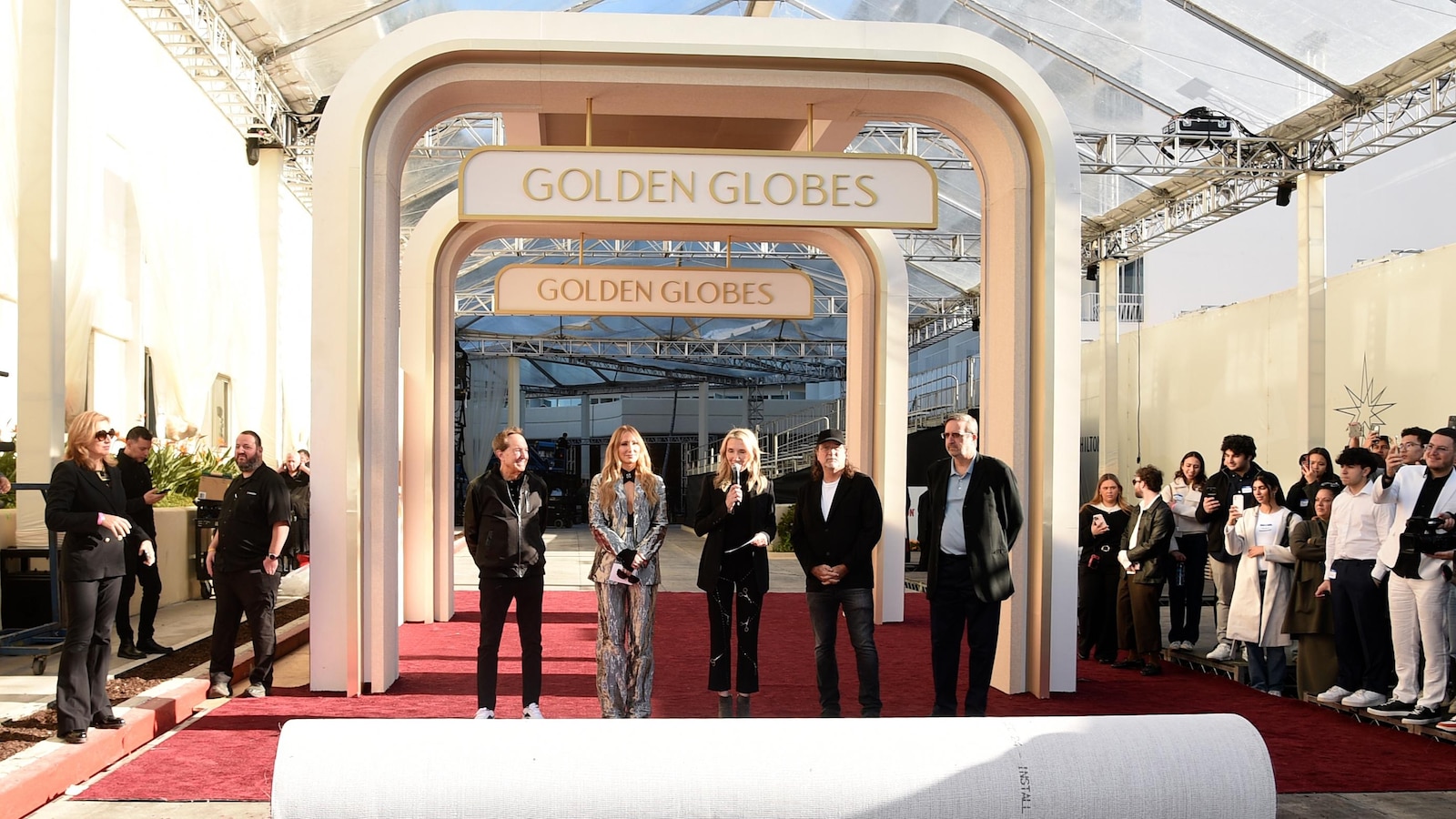The pool was empty – perhaps because at about 22C, the water was too cold for Italians. It was also about to close. Whatever the reason, we had the glorious Biolago di Pinzolo, a spring-fed, plant-filtered swimming lake, to ourselves. As my son and I swam, we could just make out the tiny red-roofed hermitage of San Martino on the forested slope above, where, according to legend, a hermit survived on bread provided by a tame bear.
We’d come to the mountains of northern Italy for an alternative family break, away from the honeypot cities and beach resorts further south.
After our swim we strolled through Parco Pineta, where families were picnicking and teens were making the most of the many sports pitches and skateboard bowl. There seemed to be something for everyone – even the local insect pollinators were catered for with a roped-off patch of wildflowers and a bee hotel.
It might seem odd to rave about an artificial pool in a neatly landscaped public park when the surrounding mountains offer a giddy array of activities in a more dramatic setting, but Biolago di Pinzolo is one of several recent attractions designed to broaden the appeal of the Adamello-Brenta natural park in summer.
Straddling the Italian Alps and the westernmost part of the Dolomites, with the Rendena valley forming the border between the two, the area is a Unesco-listed geopark thanks to the geodiversity of the two mountain ranges. This means the area encompasses fir forests and meadows, glaciers and waterfalls, valleys and stark rocky peaks. Yet relatively few people outside Italy holiday in this northern enclave, opting instead for the more famous Tyrol close to the Austrian border: 80% of tourists in the natural park in summer are Italian, and the foreign visitors who do come tend to head straight into the mountains to brave the via ferrata or climb the rock faces. My 13-year-old son and I were there to discover the natural park in a gentler way.
Our base for the first few days was Pimont Alpine Chalet, a three-bedroom guest house two miles from Pinzolo. One of a cluster of seven stone buildings that were once home to families who tended cattle on the mountainsides, the chalet was converted by Chiara Maestri and her forest ranger husband, Loris Panizza, in 2021. Using the original wood where possible to maintain the spirit of the old farmstead, the interior is stylish but pared back – letting the setting provide the drama, and the food and hospitality the warmth.
Opening mid-pandemic was far from ideal but Chiara used the time to teach herself to bake, and the results are delicious. Breakfast at the chalet is a feast of local produce – yogurt from a nearby farm, berries from the garden, honey from the chalet’s own hives and homemade cakes that are so light it feels perfectly acceptable to have at least two slices for breakfast.
Sitting at 1,000 metres (3,280ft), the chalet has walks from the doorstep into the Nambrone and Rendena valleys. One path leads to the Amolacqua trail, a recently built circular route that runs along the crystal clear, trout-filled Sarca River, over raised wooden paths through the forest and past the Amola waterfall. At just under a mile in length and flat and wide enough for buggies, it is aimed at families and gave us a brief but intense introduction into a green-blue wonderland that surrounds the chalet.
Another new development aimed at families is the Montagnoli adventure park. Set around a turquoise lake that provides water for artificial snow in winter, it’s like the UK’s Go Ape on steroids. My son threw himself into the course with vigour while I gamely followed him until we reached the hardest level and my fear of heights got the better of me. Still, I forced myself to do the zip wire over the lake, squealing all the way. Afterwards, we braved the water, to the bemusement of the school group on the shore.
The symbol of the Adamello Brenta natural park is a bear and I was curious (OK, anxious) to know whether we were likely to come across one on our hike the next day. Over breakfast at the chalet, Alessandro Beltrami of the Madonna di Campiglio mountain guides insisted that sightings are extremely rare. Reassured, we took the Grostè cable car on the outskirts of Madonna di Campiglio, with my son declaring: “This is the first time I’ve ever been excited about a walk.”
after newsletter promotion
The evening before, Alessandro had driven us up to the Cornisello alpine hut, a newly revamped restaurant with rooms, where we dined on canederli (cheesy bread dumplings) and polenta gnocchi, followed by apple strudel – hearty mountain fare for those who have spent the day burning calories on the slopes. Our visit coincided with a storm, so we could barely see the path outside, let alone the spectacular sunset. Instead, the hut appeared to be floating in an ocean of cloud.
Happily, the sky was clear for our hike from the Grostè pass. At 2,440 metres, the landscape is bare and arid but the views across the Brenta Dolomites are majestic – stark, jagged peaks against a blue sky. We set off following a rocky path down to Rifugio Tuckett, one of a network of refuges linked by trails and via ferrata. Run by the local alpine association, it has 120 beds and a restaurant where we grabbed a snack as Alessandro pointed to a red dot on the rock face opposite, which turned out to be a friend of his scaling a popular climbing route. From the 2,272-metre Rifugio Tuckett, we continued our descent, shrubs and wildflowers giving way to trees as we entered the valley, stopping repeatedly to take in the panoramic views of forested valleys and snowy peaks.
From Rifugio Casinei, where we stopped for more starchy mountain food, the path led back into Madonna di Campiglio. A favourite retreat of the Habsburgs in the late 19th century and site of one of the first hotels in the area, Relais des Alpes, the resort has retained its upmarket air, with fancy shops and Michelin star restaurants. But its less glamorous neighbours are catching up. We dined at Il Rendenèr in Pinzolo, opened in December 2021, which celebrates local produce, with dishes such as grilled brown trout with creamed celeriac, and venison with seared black cabbage.
Our final two nights were spent at Pra de la Casa, a centuries-old chalet surrounded by wild meadows. There was some respite from the rich mountain food when we joined Eleanora (Noris) Cunaccia on a foraging tour. Noris is an expert in wild plants, which she uses to make all kinds of compotes and syrups (sold online at primitivizia.it). Setting off from Pra de la Casa, we walked in silence across the meadow and into the sun-dappled wood.
Along the way Noris stopped to show us a tiny herb that tastes like cucumber, a yellow flower that can be used in place of rennet to make cheese, a thistle that she uses in risotto, and wild strawberries no bigger than my little fingernail but packed with flavour. On our return a table was set with white linen and a bottle of Ferrari sparkling wine, pickled dandelions and local cheeses – delicious with mugolio, a barrel-aged syrup made from pine cones.
Sitting down to this forest feast was a moment to reflect on what this mountainous enclave of northern Italy has to offer. Yes, there are dramatic peaks and sheer rock faces for adrenaline-junkies, but there are other ways to immerse yourself in nature – whether it’s floating in a natural pool, clambering through the treetops or plucking aromatic leaves to add to a summer spritz.






